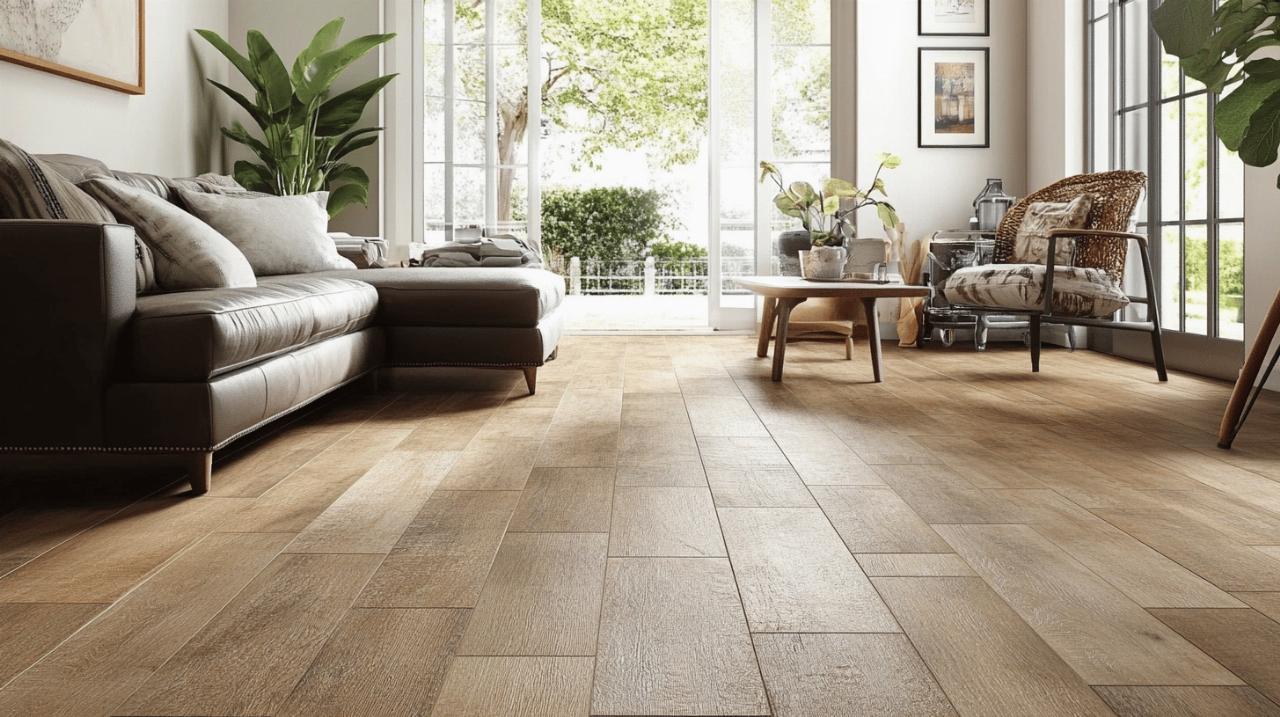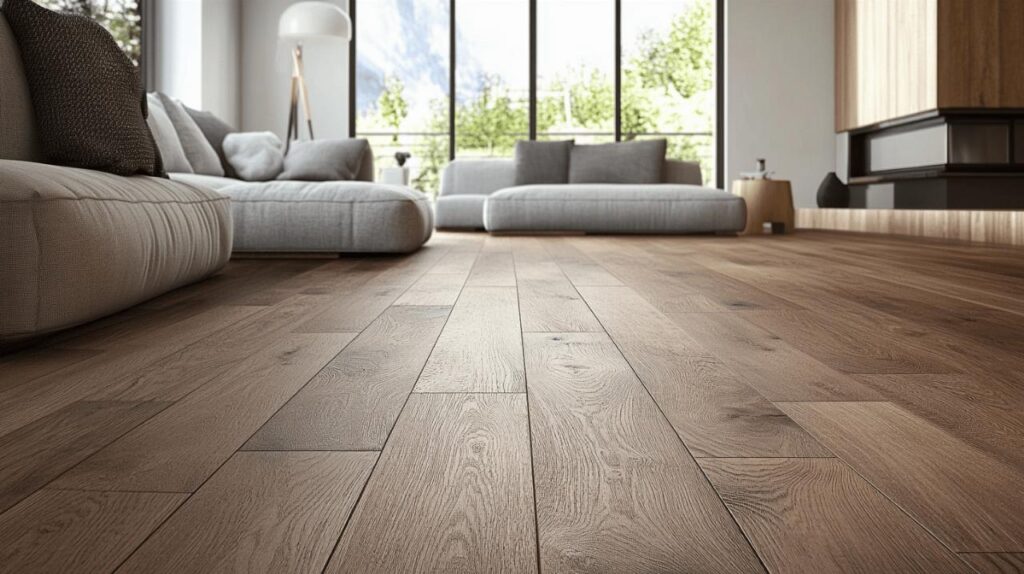Selecting the right flooring is one of the most impactful decisions you’ll make when decorating your home. Beyond mere functionality, your choice of flooring establishes the foundation upon which all other design elements will rest. With countless materials, colours, textures, and installation patterns available, the options can seem overwhelming—yet this variety is precisely what allows flooring to become such a powerful tool in home transformation.
The Fundamental Impact of Flooring on Home Design
Flooring serves as the canvas for your entire living space. When browsing through Tiendas de Decoracion or home design centres, you’ll notice how different flooring materials dramatically alter the perception of identical room layouts. This foundation element influences everything from furniture selection to lighting choices, effectively setting the stage for your entire decorative scheme.
Creating visual foundations for your living space
The visual weight of flooring cannot be overstated—it typically represents the largest surface area in any room. Wide-plank hardwood creates an open, spacious feel in larger rooms, while herringbone or chevron patterns add visual interest to hallways and entryways. These installation patterns don’t just cover your floor; they guide the eye and influence how people move through and experience your space.
Setting the Tone Through Texture and Colour
Flooring colour psychology plays a significant role in atmosphere creation. Lighter floors reflect more light, making spaces feel more expansive and airy—ideal for smaller rooms or areas with limited natural light. Darker flooring adds warmth and sophistication but may make spaces feel more intimate. Texture introduces another dimension entirely, with smooth surfaces lending themselves to contemporary designs while hand-scraped or distressed finishes enhance rustic or traditional aesthetics.
Exploring different flooring materials and their aesthetic appeal
The material you select for your flooring speaks volumes about your design preferences and lifestyle needs. Each option brings its own character to your home, influencing both aesthetics and functionality.
Natural wood flooring: timeless elegance and warmth
Hardwood flooring remains one of the most sought-after options for its timeless appeal and remarkable versatility. Oak, maple, walnut, and other species each bring distinctive grain patterns and natural colour variations. The orientation of wood planks significantly affects spatial perception—a fact highlighted in several design blogs from December 2024 that discuss how parquet orientation influences both space perception and how light interacts with the floor throughout the day. Reclaimed wood has gained popularity for its character and sustainability credentials, sometimes sourced from unexpected places like old gymnasiums or even retail establishments.
Tile, Stone and Modern Alternatives: Versatility in Design
Ceramic and porcelain tiles offer incredible design flexibility, from minimalist solid colours to elaborate patterns. Monochrome patterned tiles create striking visual effects in bathrooms and entryways, while wood-look porcelain provides the aesthetic of timber with enhanced durability in moisture-prone areas. Luxury vinyl tile has revolutionized the market by offering realistic representations of natural materials at more accessible price points. These products can convincingly mimic everything from concrete for industrial aesthetics to richly textured wood, all while providing superior water resistance and easier maintenance.
Matching flooring to your home’s architectural character
Successful interior design acknowledges and complements the architectural bones of your home. Flooring selections should harmonize with these inherent characteristics rather than fight against them.
Complementary flooring choices for period properties
Heritage homes benefit from flooring that respects their historical context. Victorian properties shine with traditional parquet or wide board pine, while mid-century modern homes often feature original terrazzo or cork that can be restored rather than replaced. When authentic materials aren’t practical, modern alternatives can evoke the appropriate era—luxury vinyl can mimic traditional materials while offering contemporary performance benefits. The key lies in understanding the architectural language of your home and selecting flooring that continues that conversation.
Contemporary flooring solutions for modern homes
Modern architectural styles often embrace innovative flooring solutions. Polished concrete offers industrial chic appeal in open-plan settings, while large-format tiles create clean, uninterrupted surfaces. Many contemporary homes benefit from mixing materials to define functional zones within open spaces—perhaps using hardwood in living areas while transitioning to tile in kitchens. This approach maintains visual flow while acknowledging the different practical requirements of each area.
Creating atmosphere through thoughtful flooring selection
 Beyond aesthetics, flooring profoundly influences how a space feels emotionally. The tactile and visual qualities of your flooring contribute significantly to the overall atmosphere you wish to create.
Beyond aesthetics, flooring profoundly influences how a space feels emotionally. The tactile and visual qualities of your flooring contribute significantly to the overall atmosphere you wish to create.
Cosy and Inviting: Flooring for Comfort-Focused Spaces
For spaces where comfort is paramount, such as bedrooms and family rooms, warmer flooring materials create inviting environments. Carpet offers obvious tactile comfort and sound absorption, making it ideal for restful spaces. Engineered wood provides natural warmth underfoot while accommodating underfloor heating systems. Cork flooring, highlighted in eco-friendly design blogs from January 2025, offers natural insulation properties that prevent humidity problems while providing a slightly yielding surface that’s comfortable for extended standing.
Sleek and Sophisticated: Flooring for Minimalist Aesthetics
Minimalist interiors benefit from flooring that creates clean, uninterrupted surfaces. Large-format tiles with minimal grout lines offer seamless visual flow, while light-toned engineered wood with matte finishes provides natural texture without visual clutter. These spaces often emphasize the interplay between light and floor surfaces, with the orientation of materials carefully considered to enhance natural lighting conditions throughout the day.
Practical considerations when selecting home flooring
While aesthetics may drive initial flooring choices, practical factors ultimately determine long-term satisfaction with your selection.
Balancing durability, maintenance and budget requirements
High-traffic areas demand flooring that can withstand consistent use without showing excessive wear. Porcelain tile and luxury vinyl offer exceptional durability for entryways and kitchens, while engineered hardwood provides a balance of beauty and resilience in living areas. Maintenance requirements vary significantly between materials—natural stone may require periodic resealing, while laminate offers simplified care routines. Budget considerations extend beyond initial purchase price to include installation costs and long-term maintenance expenses. Many suppliers now offer warranties ranging from 5 to 25 years, providing peace of mind for significant investments.
Sustainability and eco-friendly flooring options
Environmentally conscious homeowners increasingly prioritize sustainable flooring options. Bamboo and cork represent rapidly renewable resources that make excellent flooring materials. Reclaimed wood offers historical character while giving new life to existing materials. Many manufacturers now produce flooring with reduced VOC emissions and sustainable manufacturing processes. These eco-friendly options often provide additional benefits like natural insulation properties that improve energy efficiency within the home.
Room-specific flooring strategies
Different rooms present unique challenges and opportunities for flooring selection, requiring thoughtful consideration of both aesthetics and functionality.
Moisture-Resistant Solutions for Kitchens and Bathrooms
Areas prone to moisture exposure demand appropriate flooring solutions. Porcelain tile remains a kitchen and bathroom staple for its water resistance and durability. Wood-look porcelain provides the aesthetic appeal of timber without water damage concerns. Luxury vinyl tile offers waterproof performance with comfortable underfoot feel—ideal for kitchens where people stand for extended periods. For spaces that transition to outdoor areas through bi-fold doors, continuing similar materials from interior to exterior creates visual flow while using appropriate variations for weather exposure.
Comfort-Focused Flooring for Bedrooms and Living Areas
Living spaces benefit from flooring that balances comfort with style. Engineered hardwood offers natural warmth in living rooms, while plush carpeting provides comfort in bedrooms. Modular solutions allow for creative expression while facilitating easier replacement of damaged sections. When selecting flooring for these comfort-focused areas, consider acoustic properties as well—some materials naturally absorb sound, creating quieter, more peaceful environments. The integration of appropriate underlay materials can enhance both comfort and insulation, improving the overall living experience.

